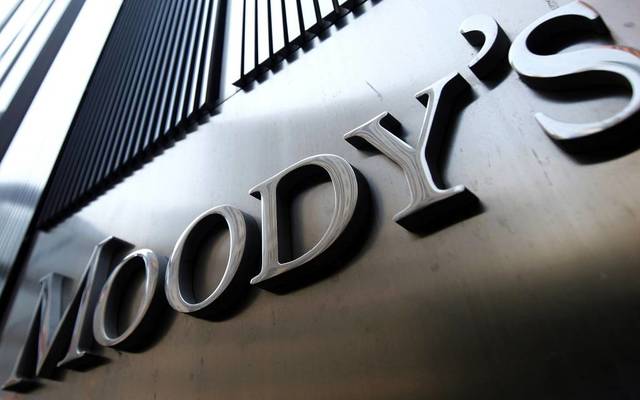By Moody’s Analytics
The U.S. disinflationary forces gathered steam in June. The U.S. consumer price index rose 0.2% in June, in line with our below-consensus forecast. This comes on the heels of 0.4% and 0.1% gains in April and May, respectively.
The CPI for energy was up 0.6% in June after falling 3.6% in May. The CPI for gasoline increased 1%, while energy services prices inched 0.4% higher. Elsewhere, food prices were up 0.1% after rising 0.2% in May. On a year-ago basis, the not seasonally adjusted CPI was up 3%. Consequently, annual headline CPI inflation is at its lowest since March 2021, when the economy was just beginning to reopen from the worst of the COVID-19 pandemic.
Excluding food and energy, the consumer price index was up 0.2% in June. Not only did this surprise to the downside relative to our and consensus expectations for a 0.3% increase, but it was the smallest monthly gain since February 2021 and even broke a six-month streak of 0.4% or more growth.
On a not seasonally adjusted basis, the core CPI is up 4.8% from a year earlier, which is the slowest pace since October 2021. There are good reasons to believe that core disinflation on a year-over-year basis will persist over the next months.
Used-vehicle price spike ends
Arguably, the most important development within the core CPI was the unwinding of the latest used-vehicle price spike. After surging by 4.4% in the preceding two months, the CPI for used vehicles dipped by 0.5% in June. The recent rise in used-vehicle prices seems to have been attributable to a slight slowdown in U.S. auto production that started at the end of 2022, as well as consumers taking advantage of the better-than-usual winter weather by spending on retail faster than expected.
Also, the secular decline in off-lease vehicle volume since the onset of the COVID-19 pandemic has constrained the supply of used vehicles, as leasing has typically been a key source of almost-new used vehicles.
Nevertheless, in recent months, dealerships have been paying much less at auction for the used vehicles they sell later. This points to even-larger declines in retail prices for used vehicles during the next few months.
The wholesale used-vehicle retention value index, as calculated by Moody’s Analytics, is a useful leading indicator of the CPI for used vehicles; it has fallen by nearly 10% from February through June. Wholesale used-vehicle prices, as captured by the Manheim Used Value Index, have also declined by nearly 10% over a similar timeframe.
We prefer our retention value index to the Manheim index as a predictor of the CPI for used vehicles. The retention value index controls for price increases caused by higher MSRPs, or new-vehicle costs; this is a proxy for the Bureau of Labor Statistics’ own methodology to control for consumer utility when calculating the CPI for used vehicles.
Second-order effects
New-vehicle prices were unchanged in June after inching lower in the prior two months, and odds are that declines in new-vehicle prices will resume dropping this summer in light of strong auto production in recent months.
Nevertheless, the past surge in new-vehicle prices is having second-order effects elsewhere within the universe of vehicle-related prices. In June, the CPI for motor vehicle maintenance and repair jumped 1.3%, while the CPI for motor vehicle insurance followed up May’s 2% gain with a 1.7% increase. The CPIs for motor vehicle maintenance and repair and motor vehicle insurance together account for nearly 5% of the core CPI.
For insurers, more expensive labor and auto parts have driven up repair costs. Also, the increase in the value of most vehicles since the onset of the pandemic has not only reinforced higher repair costs, but also translated into higher replacement costs for totalled cars and trucks.
We note that there was an almost one-year lag between the peak in new-vehicle price inflation and the apex of cost pressures observed in motor vehicle maintenance and repair and auto insurance. It is important to note that the CPI for motor vehicle insurance is reaccelerating, possibly because of more highway accidents relative to pre-pandemic norms.
Gimme shelter
Another crucial development is the disinflation that is gathering steam in shelter, which accounts for more than 40% of the core CPI.
Though the CPI for rent of primary residence increased 0.5% for a second straight month, the even more important CPI for owners’ equivalent rent (the hypothetical rent that homeowners would have to pay themselves to live in their own homes) was up 0.4% after rising 0.5% in the preceding three months. This was the smallest gain in the CPI for OER since December 2021.
On a year-ago basis, the CPI for rent of shelter, which includes OER and rent of primary residence, is up 7.9%, which is still elevated from a historical perspective but down from its peak of 8.3% in March.
The CPI captures the average price change for all tenants. Because most renters are locked into long-term leases for six to 12 months, an increase in the spot price of rent will not immediately affect all renters, only those moving into a new unit. The broader scope of the CPI’s rental measures, along with methodological delays between actual and surveyed rent changes, means that sudden swings in rents facing new tenants will show up with a lag.
The Bureau of Labor Statistics has created a New-Tenant Repeat Rent Index that is based only on the leases of tenants who recently moved in. Year-over-year growth in the NTRR index peaked at nearly 13% during the first half of 2022 but has since fallen to slightly negative territory in the first quarter of 2023. This is key, as past research by the Cleveland Fed has found that the NTRR index typically front-runs the official BLS rent inflation by four quarters.
Moreover, the NTRR index suggests that the rent gap that opened up between new and all tenants during the past two years has fully closed. An important caveat is that the NTRR index is likely exaggerating the degree to which rents for all tenants have caught up to those for new tenants, as the index is based on a relatively small sample and has been subject to large upward revisions. That said, private-sector measures of rent, especially from Apartment List, show that this rent gap has indeed narrowed, suggesting less upward pressure on the official BLS rental inflation going forward.
Monetary policy implications
The June CPI carries limited monetary policy implications for the immediate term, as the Federal Open Market Committee is poised to raise interest rates by 0.25 point in July.
However, the combination of a softer-than-expected jobs report and CPI in June makes back-to-back rate hikes less likely and fed funds pricing data suggest a less-than-15% probability of the central bank moving again in September.









